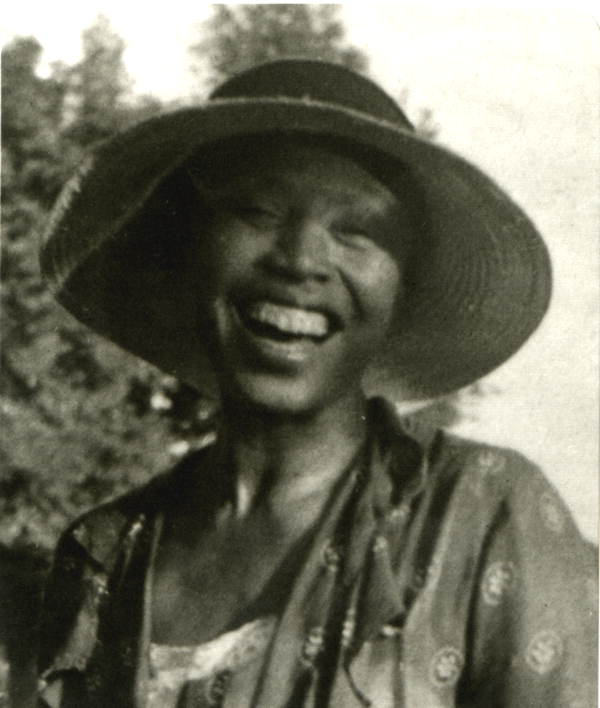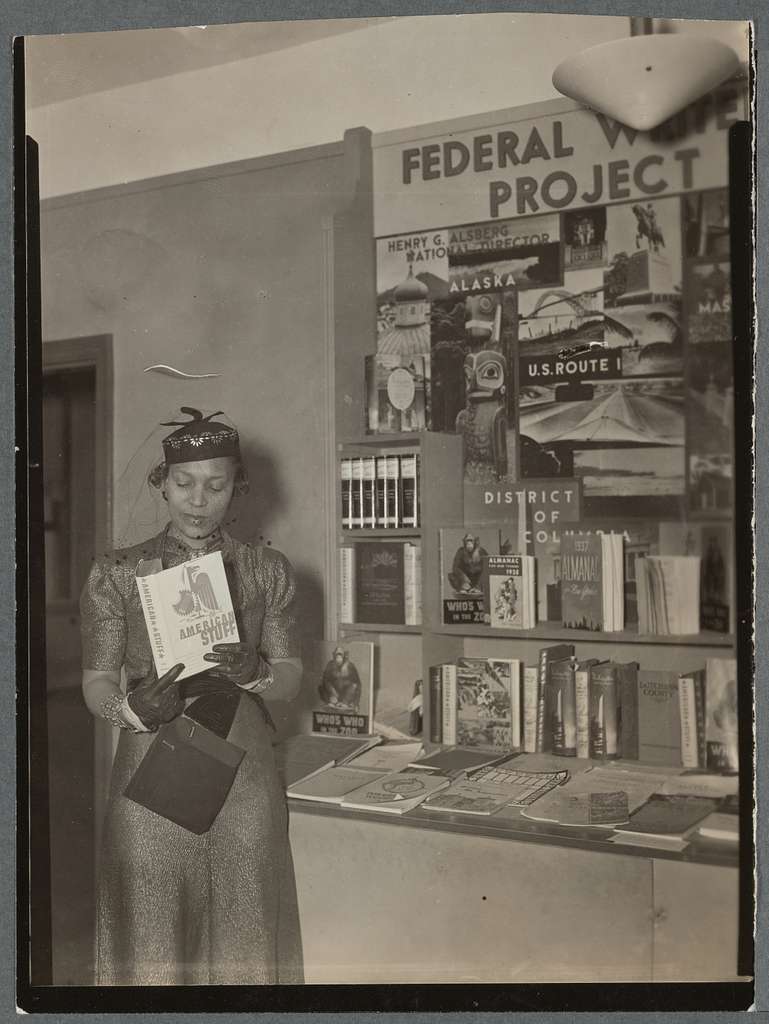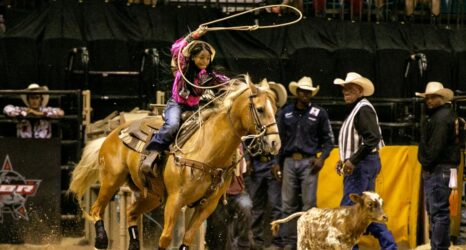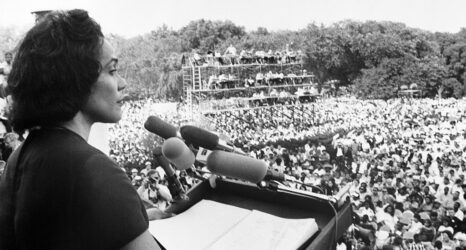PBS’ American Experience premieres its documentary film this week on pioneering writer and anthropologist Zora Neale Hurston (1891-1960). Directed by Tracy Heather Strain, Zora Neale Hurston: Claiming a Space is the first film to explore Hurston’s life and ethnographic work in great detail.
Irma McClaurin is a Black feminist poet, anthropologist and public scholar at large—and a Hurston expert and enthusiast, who is featured in the documentary. She spoke with Ms. editor Janell Hobson about why Zora is still so relevant to our own times, as well as the importance of this new film—which debuts during Hurston’s birthday month and the day after the official holiday of the Rev. Dr. Martin Luther King, Jr.
Zora Neale Hurston: Claiming a Space airs Tuesday, Jan. 17, on PBS stations.
Janell Hobson: You have so many similarities to Zora Neale Hurston, someone you obviously love.
Irma McClaurin: I feel very much connected to her because I come from a literary background first, which is what she did. And then I get into anthropology, and I don’t write as a traditional anthropologist. I’m infusing some of the literary stylistic conventions into my anthropology. Much of my literary stuff has become more ethnographically informed by the research that I’ve done and the data I’ve collected. And I think that’s what Zora was doing too.
If you look at her novel Their Eyes Are Watching God, what makes it so powerful are the descriptions of what was happening, the landscape and all of that was really based on ethnographic data. There was in fact a flood that occurred in Florida, and so she’s using data in order to create this landscape.
I think what is different about her work, particularly after she gets involved in anthropology, is that it’s very much informed by the data she’s collecting as opposed to it just being an imaginary thing. She’s utilizing real data from everyday life to inform the fiction that she’s creating. So, her work is auto-ethnographic, and that becomes very powerful.

Hobson: I think it’s interesting that Their Eyes Are Watching God not only incorporates ethnography of the Lake Okeechobee hurricane in Florida (1928), but she’s also writing this novel when she’s doing fieldwork in Haiti.
What do you think is the connection there?
McClaurin: I think in Haiti she had begun to recognize the status of women. She’s observing what is happening to women in Haiti. And I think that influences what she thinks about women’s status in ‘Their Eyes Are Watching God.’
There is Janie who is musing under the pear tree about this aspirational idea of what love is and of becoming a woman. And her grandmother is very grounded in the reality of what it means to be a Black woman at that moment in time. And when she says those words, “Black women is the mules of the world,” that is one of the most powerful lines in the novel.
That in some ways encapsulates what Zora is observing in Haiti—probably her own experience of what she’s observed of Black women, her own personal experience. Here she is trying to be an independent writer and anthropologist at a moment in time when what was open to Black women as potential professions was very limited. You are either somebody’s wife, somebody’s domestic, maybe you might be a school teacher if you’re lucky, but the idea that you could be an independent Black woman researcher and scholar is really almost like talking about going to the moon at that moment. It just seems unattainable. And there she is trying to do it.

Hobson: Is she one of the first to try this? Do you see her as a pioneer?
McClaurin: She is indeed a pioneer.
She’s a pioneer in ethnographic methods because Zora really stakes her claim as a native anthropologist. She is rooted in going back to study her own culture. And what she writes in ‘Mules and Men’ is that when she first went to her hometown Eatonville in Florida, she went there as having graduated from Barnard, and that wasn’t working.
When she goes back again, she says, I have to be honest there. People won’t let her perform. Being above them and being hoity-toity, having come from Barnard, it really grounds her. And that really, to me, is what native anthropology is about. It’s about using our personal experience and our connection to a community to try and see the data we collect through the community’s eyes, through their lens. And that’s an aspect of anthropology that still today is challenged. We’re told we can’t study ourselves.
I still have Black women anthropologists or Black anthropologists in general coming to me about the book I edited, Black Feminist Anthropology, and say, “It saved my life. It showed me that you could in fact study your own people.” And what we do in ‘Black Feminist Anthropology: Theory, Politics, Praxis and Poetics,’ the question I asked all the contributors was: How has your personal experience shaped the kind of anthropology that you decided to do? And I think Zora very much implicitly demonstrates to us how her personal experience of growing up in Eatonville has shaped the anthropology that she chooses to do.
The idea that you could be an independent Black woman researcher and scholar is really almost like talking about going to the moon at that moment. It just seems unattainable. And there she is trying to do it.
Irma McClaurin
Hobson: I don’t think people have really considered how much she has shaped the field of anthropology.
McClaurin: She really is at the forefront. She’s on the cutting edge. She actually anticipates a kind of anthropology, native anthropology, that really doesn’t have a name until decades later. No one’s talking about native anthropology. No one. People are telling her: You really aren’t supposed to be doing that. But she is very determined in that sense.
I also would say what she contributes is a Diaspora lens. Zora understood the connection between the American South, the Bahamas, Haiti, Jamaica and she also did fieldwork in Honduras. She understands that. And the Crow Dance, the one that she shows, she knows the song from the American South, the Black folk culture, that Negro folk culture that she’s studying. But then she finds it in the Bahamas, and she makes the connection between the two. That’s the Diaspora.
Hobson: This work that she’s doing, including her creative writing and plays, makes me think of her as a “Renaissance woman.” I know she was supposed to be part of the New Negro Renaissance, the Harlem Renaissance.
McClaurin: And she doesn’t get enough credit for what she contributed to that movement. What the movement is trying to do is focus on a more intellectualized presentation of Black life. But here she is elevating the folk. The New Negro movement is rooted in an urban landscape, and they’re talking about the middle class. Zora is very much rooted in the Negro folk, and she is convinced that the creativity of Black folks is in the South, not in Harlem necessarily. And that’s what she chooses to elevate. And she’s really denigrated for doing that.
If you look at the scholarship that’s been written, she’s always presented as this flamboyant, over-the-top kind of person, and the contributions she makes are minimized. If you look at how she’s presented, she’s presented more as a character, as opposed to a real sincere contributor, even though she published probably more novels and plays than some of the celebrated writers of the movement.
When I wrote about Langston Hughes and Zora Neale Hurston, the key to understanding their relationship—which I think has often been misrepresented—is in the letters that they wrote to each other. His letters to her did not survive, but her letters to him, he kept. I had a chance to read those letters, and in those letters, she is talking about her theories on Black performance. Zora was thinking about performance theory before there was a performance theory!
Zora is convinced that the creativity of Black folks is in the South, not in Harlem necessarily. And that’s what she chooses to elevate. And she’s really denigrated for doing that.
Hobson: That’s interesting to think about!
McClaurin: She sees the Negro as a performative people, part of our culture. That is how we present ourselves.
It makes sense for her to put on plays to capture this. She is studying people who are in some of the most horrific labor conditions. They’re in turpentine camps, citrus camps, and the conditions are just one step above sharecropping and slavery. And when she meets with them, and she starts reading Langston Hughes’ poetry, they innovate, they pick up a guitar, they start making music, they start translating. And so, she’s writing to Langston and saying, “Langston, look at how they see your work. They like this poem. They don’t like that poem.”
His work is actually reaching people who do not have the highest literacy level but who recognize the beauty of what he’s doing. And Zora’s the interlocutor. She’s the person both observing what they do with it and also presenting it to them. Because of this, she wants to take what she’s learning from them and translate it into plays. And that’s not going to be necessarily welcomed by the patrons of the Renaissance.
Again, when you think about what she had to endure as someone trying to be independent, trying to do this translational work that satisfies both an academic audience in the Folklore Magazine or Journal of American Folklore, and also something that is accessible in her short stories, her plays and her novels, she really is an incredible innovator in that sense. And what she contributed to anthropology is a style of writing. Anthropology only started looking at the literary styles of novels and non-scholarly writing in the late ’80s. But Zora had already been there and done that.

Hobson: What can you tell me about the film on PBS and how Zora is represented in that?
McClaurin: I think what it does is that it ensures her a place and space in the canon of anthropology. She had been viewed mostly for her literary contributions. And what we get a real sense of is her anthropological contributions, what makes her work anthropological. And ultimately, the question that anthropologists want to answer is: What makes us human? And it’s looking at cultural beliefs and values, and that’s what she’s able to document.
Look at her novel ‘Barracoon,‘ which talks about Cudjoe. We now know from the Netflix documentary, ‘The Descendants,‘ that she was onto something, that she knew that this person was one of the last Africans brought here after slavery had legally ended. And his story and how he spoke, and how he had to adapt his African language into an English vernacular in order to be able to communicate. She chooses to write the novel in his vernacular, and she actually refused publication because publishers wanted her to turn it into standard English. She refuses. So, the novel sits unpublished for almost a century until recently. Now we see that this integrity was so critical to us. We have an actual record of Cudjoe and how he was speaking and how he adapted and creolized his African language to be able to communicate in English.
Hobson: What would you say is her overall legacy?
McClaurin: I would say native anthropology, that we can study ourselves, that using that lens is a valid form of ethnographic research. The way in which she understood the diaspora, even though she didn’t use that language, that there was a connection between the cultural elements that we see in the United States in the South, and those people who migrated from the south to the north, in Haiti, Jamaica, the Bahamas.
She also contributes to gender analysis, that there is a pattern of subordination, particularly of Black women, that can be found in the United States, in Haiti, in Jamaica. And finally, her ethnographic writing, she showed us how you could take real data from real people and use that as a resource for literary creativity or for public anthropology.
Hobson: What one word would you use to describe Zora?
McClaurin: Conundrum.
I think she was a conundrum. … She didn’t fit the pattern. And I think the fact that this documentary is showing us new ways in which she has influenced people speaks to that. She was a woman before her time.
Editor’s note: Alice Walker’s famous article “In Search of Zora Neale Hurston” was published in Ms. magazine in 1975 and helped revive interest in Hurston’s work.
Up next:
U.S. democracy is at a dangerous inflection point—from the demise of abortion rights, to a lack of pay equity and parental leave, to skyrocketing maternal mortality, and attacks on trans health. Left unchecked, these crises will lead to wider gaps in political participation and representation. For 50 years, Ms. has been forging feminist journalism—reporting, rebelling and truth-telling from the front-lines, championing the Equal Rights Amendment, and centering the stories of those most impacted. With all that’s at stake for equality, we are redoubling our commitment for the next 50 years. In turn, we need your help, Support Ms. today with a donation—any amount that is meaningful to you. For as little as $5 each month, you’ll receive the print magazine along with our e-newsletters, action alerts, and invitations to Ms. Studios events and podcasts. We are grateful for your loyalty and ferocity.





